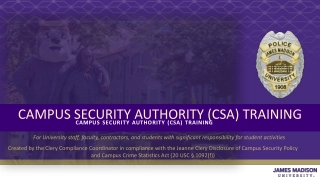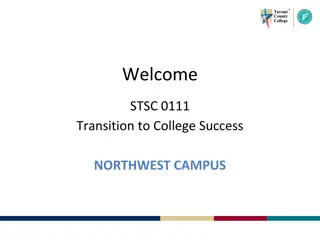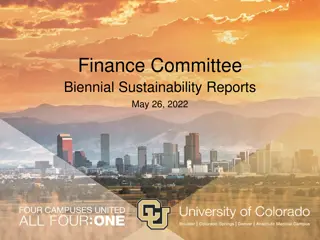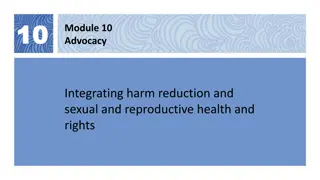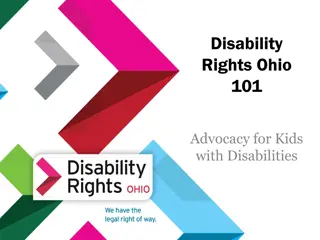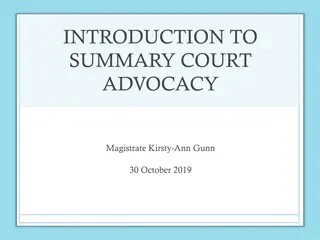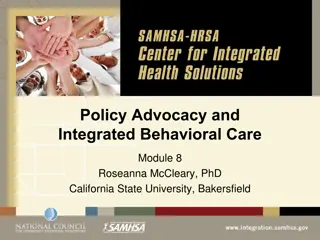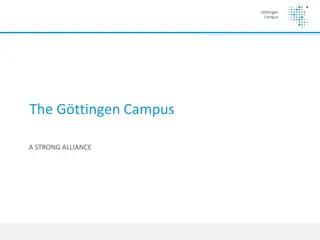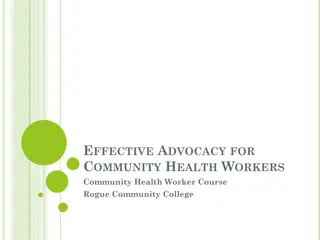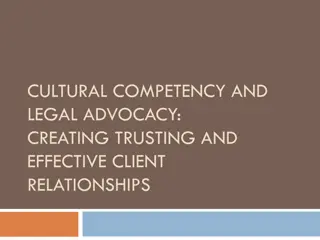Campus Advocacy: Building Relationships and Best Practices
Explore how advocates employed by universities, including those housed on campus and contracted to provide advocacy services, play a crucial role in supporting students who have experienced sexual violence. Learn from panelists about different advocacy models and how campuses collaborate with organizations like the Rape Crisis Center to ensure comprehensive support for survivors. Dive into real-life scenarios like the example case of a first-year student experiencing sexual assault on campus. Discover the various ways campuses provide advocacy, from employing advocates directly to contracting with external organizations.
Download Presentation

Please find below an Image/Link to download the presentation.
The content on the website is provided AS IS for your information and personal use only. It may not be sold, licensed, or shared on other websites without obtaining consent from the author. Download presentation by click this link. If you encounter any issues during the download, it is possible that the publisher has removed the file from their server.
E N D
Presentation Transcript
+ Campus Advocacy: Building Relationships and Best Practices Elizabeth Cota, Monterey County Rape Crisis Center advocate (CSU Monterey Bay) Emily Crutcher, CARE Director (UC Santa Cruz) Caitlin Kauffman, Bay Area Women Against Rape advocate (CSU East Bay)
+Raise your hand if You are an advocate employed by a university You are an advocate employed by RCC, housed on campus and contracted to provide advocacy You are an advocate employed by RCC, no formal contract with a campus
+Panelists Elizabeth Cota, Monterey County Rape Crisis Center advocate (CSU Monterey Bay) Emily Crutcher, CARE Director (UC Santa Cruz) Caitlin Kauffman, Bay Area Women Against Rape advocate (CSU East Bay)
+How campuses provide advocacy Campus employs advocates Example: University of California system Some are on call, some contract with RCC to provide after hours coverage
+How campuses provide advocacy Campus employs advocates Example: University of California system Some are on call, some contract with RCC to provide after hours coverage Campus contracts with RCC to house an advocate Example: Several California State University (CSU) campuses
+How campuses provide advocacy Campus employs advocates Example: University of California system Some are on call, some contract with RCC to provide after hours coverage Campus contracts with RCC to house an advocate Example: Several California State University (CSU) campuses Campus refers to RCC with no contract Example: many community colleges and private schools May have MOU to provide after hours coverage, but no direct contract to compensate RCC
+Example Case Scenario Female first year student goes to a party her first weekend on campus. She has several drinks to the point of incapacitation. A male student who she just met offers to walk her home, since he lives in the same dorm. Her friends see them leave together. He walks her home, where he sexually assaults her. She tells her RA that night, who makes a report to Title IX. The next day she visits the health center and discloses to a clinician, who is mandated to call campus police. Title IX and campus police both refer her to the on campus advocate, who walks over to the health center and meets with her. At that time she decides to do a restricted SART.
+Example Case Scenario Female first year student goes to a party her first weekend on campus. She has several drinks to the point of incapacitation. If she is under 21, she may be concerned that the campus will get her in trouble for drinking. A campus advocate can talk her through the policy (which should include an amnesty policy for survivors and witnesses).
+Example Case Scenario A male student who she just met offers to walk her home, since he lives in the same dorm. Her friends see them leave together. He walks her home, where he sexually assaults her. Since they live in close proximity and he now knows where she lives, there are some safety concerns. A campus advocate can work directly with campus housing to request an immediate move for her. They could also request a No Contact Directive from Student Conduct. She may also wish to apply for a protective order through the courts an RCC advocate who regularly goes to court can help with the paperwork and accompany her.
+Example Case Scenario She tells her RA that night, who makes a report to Title IX. Most campus employees are designated Responsible Employees and must report SA, DV and stalking to the Title IX Officer. Title IX can differ in their approach most reach out via email to provide reporting options and resources. A campus advocate who works with Title IX can explain that option to the survivor, so she can decide if she wishes to speak with Title IX and request a formal investigation. If yes, a campus advocate can accompany her to all on campus meetings.
+Example Case Scenario The next day she visits the health center and discloses to a clinician, who is mandated to call campus police. One benefit of having an advocate housed on campus is quick response. Campus advocates can train Student Health and Counseling staff to call them, and often are able to respond before the police arrive to help explain options to the survivor. Campus advocates can also explain campus medical options if she does not want a SART, including access to prophylaxis, injury care, follow-up testing, and navigating insurance.
+Example Case Scenario Title IX and campus police both refer her to the on campus advocate, who walks over to the health center and meets with her. At that time she decides to do a restricted SART. Some campus advocates have the capacity to do SART accompaniments, while others may help a campus survivor connect with an on-call RCC advocate.
+Example Case Scenario Other considerations: Advocates should ensure that campus survivors have the full range of accommodations available to them: academic, employment, transportation, housing, financial, etc. Campus advocates may be able to leverage the relationships they have on campus, while RCC advocates can leverage the relationships they have off campus. The goal is to surround the survivor with support. The survivor should always be at choice: if they feel more comfortable with on campus or off campus resources, that should be respected.
+Best Practices: Advocacy Structure Different structures may work best for different campuses. The goal is to provide seamless services for campus survivors, and creating a model that is sustainable. Survivors should always be offered a choice of campus and community resources. Offer warm referrals on/off campus. Clear protocol about confidentiality and ROI for case management between campus/community advocates Campus must establish that advocates have confidentiality and privilege (not Responsible Employees under Title IX, not CSAs under Clery, not subject to subpoena)
+Best Practices: Logistics Advocates working on a college campus should be provided with a .edu email address and campus phone extension Advocates should be housed in an appropriate location on campus: private, but close to other support resources Campus advocates should be allowed in all case management meetings with Title IX, Student Conduct, and university police Primary prevention efforts on campus should be led by advocates and/or peer educators
+Questions/Discussion Elizabeth Cota, Monterey County Rape Crisis Center advocate (CSU Monterey Bay) elizabeth@mtryrapecrisis.org Emily Crutcher, CARE Director (UC Santa Cruz) crutcher@ucsc.edu Caitlin Kauffman, Bay Area Women Against Rape advocate (CSU East Bay) caitlin@bawar.org


